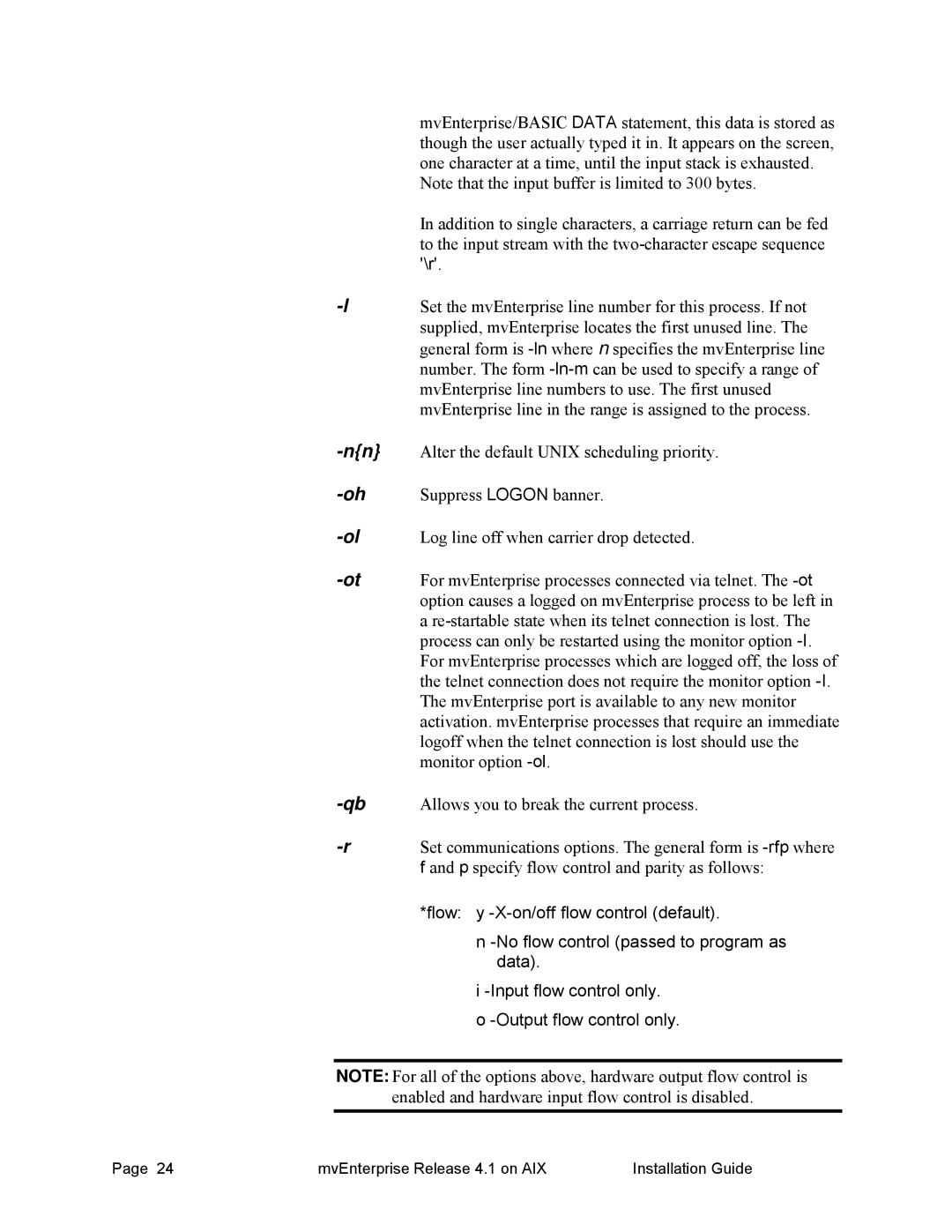| mvEnterprise/BASIC DATA statement, this data is stored as |
| though the user actually typed it in. It appears on the screen, |
| one character at a time, until the input stack is exhausted. |
| Note that the input buffer is limited to 300 bytes. |
| In addition to single characters, a carriage return can be fed |
| to the input stream with the |
| '\r'. |
Set the mvEnterprise line number for this process. If not | |
| supplied, mvEnterprise locates the first unused line. The |
| general form is |
| number. The form |
| mvEnterprise line numbers to use. The first unused |
| mvEnterprise line in the range is assigned to the process. |
Alter the default UNIX scheduling priority. | |
Suppress LOGON banner. | |
Log line off when carrier drop detected. | |
For mvEnterprise processes connected via telnet. The | |
| option causes a logged on mvEnterprise process to be left in |
| a |
| process can only be restarted using the monitor option |
| For mvEnterprise processes which are logged off, the loss of |
| the telnet connection does not require the monitor option |
| The mvEnterprise port is available to any new monitor |
| activation. mvEnterprise processes that require an immediate |
| logoff when the telnet connection is lost should use the |
| monitor option |
Allows you to break the current process. | |
Set communications options. The general form is | |
| f and p specify flow control and parity as follows: |
| *flow: y |
| n |
| data). |
| i |
| o |
NOTE: For all of the options above, hardware output flow control is
enabled and hardware input flow control is disabled.
Page 24 | mvEnterprise Release 4.1 on AIX | Installation Guide |
